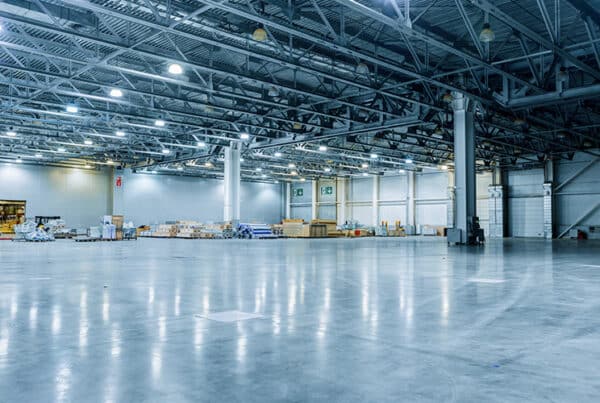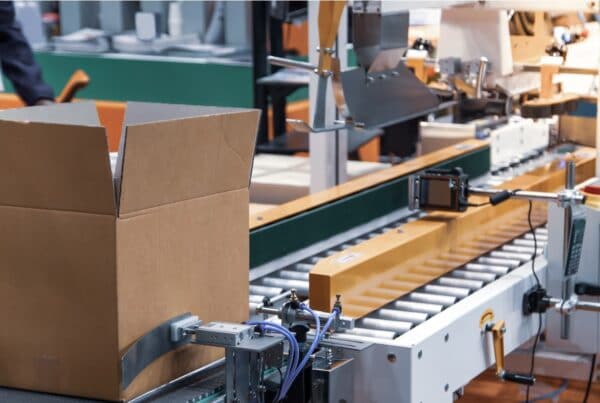With robotic palletizers, PeakLogix helps customers reduce the labor associated with palletizing, while increasing the facility’s capacity and consistency.
Whether or not your facility can realize these results depends on a number of factors, including your current processes, throughput, and box construction, as well as any special requirements.
In a best use-case, robotic palletizers are easily justified. Outside of the best use-case, costs have to be weighed against benefits. Some of those benefits – such as increased capacity and quality – are obvious. Other benefits are harder to quantify, but no less real.
Key data points for the ROI
The cost justification for robotic palletizers is complex, and many variables have to be considered. Some, such as labor rates, are both inconsistent and independent of your other processes. Others, like throughput and number of shifts, are both more constant and process dependent.
As you look at how to control costs while improving capacity and consistency of your processes, our professional integrators at PeakLogix can help determine if robotic palletizing is the right next step.
We’ll do an intensive discovery of your processes and systems, including:
- The number of cases and pallets produced daily
- The number of shifts the palletizers will run
- The FTEs (Full-Time Equivalents) involved in delivering materials and removing pallets
- History of lost-time injuries
- The local labor rates
- The sizes, weights, and shapes of cases
- The box and case construction
- Special requirements, such as specialized slip sheets or dividers
All of these factors and more must be considered holistically to justify the costs of integrating robotic palletizers into a facility’s processes.
The best use-case
The ROI on a best use-case for a robotic palletizer is straightforward – running over more shifts, more days of the week, yields a quicker return on investment. Reducing the workload lengthens the time to realize that ROI.
In a best use-case, robotic palletizers handle batches of items that are identical in weight and shape – such as boxes or cases that are filled with similar product. This allows for the integration of less expensive palletizers that don’t need to make decisions based on color, size, or shape. Features such as real-time scanning, color differentiation, or mixed-case handling add costs and complexity.
But even those added costs and complexities are becoming easier to justify in an increasingly challenging labor market.
Employee morale, reallocation, and retention
Manual labor, especially for physically demanding and accident prone tasks like palletizing, is becoming harder to find than ever. People who spent much of the pandemic unable to work took that time to re-evaluate their priorities.
As they return to work, they’re actively looking for — and often unwilling to accept less than — jobs that they find rewarding, and that offer better flexibility, work-life balance, and pay.
Automating operations is part of committing to a process that pivots employees away from physically demanding labor and into more fulfilling, satisfying work.
Automation – including robotic palletizers – allows employers to pull staff away from low-value tasks. Moving employees into higher-value roles – that require decision making – increases employee satisfaction and provides clearer paths for growth within the organization.
These benefits are known to increase employee retention. Roles that provide internal growth keep employees engaged with the company – a key consideration in a labor market that’s predicted to remain tight for at least the next decade.
Improved safety, improved culture
Automating labor-intensive, repetitive tasks is known to improve safety and lower lost time injury rates.
More difficult to quantify is how an improved safety culture has benefits beyond lowered safety incidents and improved profitability. Integrating automation — including robotic palletizers — into your processes is part of creating the kind of culture that workers increasingly care about. One that supports and empowers employees, taking them away from non-value-adding tasks and into more skilled work.
Removing these physically demanding tasks like palletizing, that frequently cause repetitive and over-use injuries, keeps employees safer. It gives them a higher quality of life both in and out of the workplace. It lets you reallocate them into jobs that have greater potential for growth. And it helps build stronger relationships between the employees, managers, and executives.
Mitigate environmental factors
Environmental factors create challenges for both manual and robotic palletizing.
Palletizing in cold storage environments is perhaps the most common environmental factor in the fulfillment industry. Cold environments create challenges for employee safety and productivity, as well as product quality.
Robotic palletizers eliminate these concerns. They can operate at the temperature that’s best for the product, in coolers and even freezers. And unlike manual labor, robotic palletizers don’t need additional breaks when working in cold storage.
Dusty environments are another common concern for palletizing, especially in manufacturing. Depending on the substrate, dust can be extremely dangerous to inhale, and all care must be taken to ensure the health of the employee.
For robotic palletizers, dust is also a hazard. It can work its way into pivot points and gears, resulting in abnormal wear. But these risks can be mitigated with enclosures, skirts, and other accessories.
As employees navigate these environments, the personal protective equipment they need – respirators to protect against dust, or extra layers to ward off the cold – can affect how well they move in their environment, and even their ability to do their job. Once properly outfitted, robotic palletizers perform their task the same way, cycle after cycle, regardless of the environment.
Maximize quality and consistency
Robotic palletizers increase quality and consistency, especially in cold or uncomfortable environments.
Robots can be designed to be extremely pressure sensitive, guaranteeing that product and boxes aren’t smashed. Palletizers move in well-defined planes, stacking exactly the same way for each pallet. Unlike manual labor, robotic palletizers don’t drop boxes because they’re tired or wearing uncomfortable gear. They don’t toss boxes up to the top row, and they don’t get tired and lean against or sit on pallets.
This increased consistency creates more stable pallet loads, minimizing the risk that a pallet could be unbalanced and tip.
Plan for maintenance
In physically demanding jobs like palletizing, manual labor is known for calling in and needing paid time off. That robots don’t call in sick is one of their key benefits.
However, robots do require maintenance, and sometimes need repair.
In most manufacturing facilities, and sometimes in distribution, there is a maintenance staff on-site capable of handling these basic needs.
For other facilities, how maintenance is handled must be planned for.
PeakLogix has programs that can help. We provide more than delivery, assembly, and integration of systems. We also help train your staff in both the use and maintenance of your new equipment, and offer 24/7 support.
Should the worst happen and your system need repair, we’ll first help you troubleshoot the problem either remotely or virtually. If that doesn’t get your systems up and running, our technicians can be scheduled to be on-site in as little as 24-48 hours.
Is robotic palletizing right for you?
Robotic palletizers could be right for you if you need to improve the capacity and reliability of your operations. Especially in best use-cases – multiple shifts, 5-7 days/week, running batches of identical items – they are easily justified. They also solve many problems associated with environments that are unsafe or uncomfortable for manual labor.
Robotic palletizers can also help with challenges created by the increasingly tight labor market. They enable you to reallocate staff to more rewarding, fulfilling roles in your organization. By placing employees into more career-oriented roles – as opposed to simple jobs – you help increase their job satisfaction and your employee retention.
Want to learn more about how our robotic palletizers can help increase your capacity and consistency? Contact us to talk details and strategies!
An automated solution eliminated the need for manual labor.
PeakLogix designed and installed an automated conveyor system to feed cases into and transport pallets out of 4 Robotic Palletizing Cells, integrating robots and custom-built end effectors. The new system eliminated all manual labor and has the capacity to palletize up to 120,000 cases into 600 palletized loads in a single 20-hour day.





